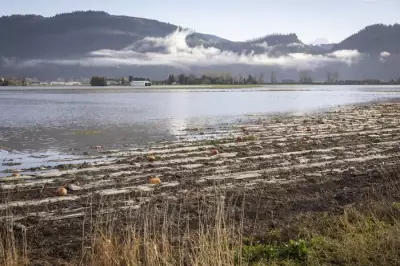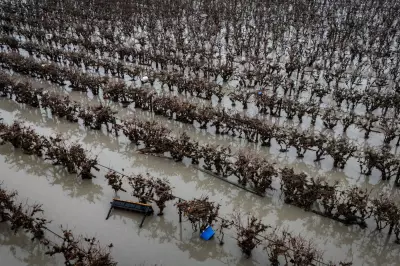
The Lower Mainland of British Columbia remains under siege from a powerful atmospheric river that continues to dump torrential rain across the region, prompting serious flood concerns and travel advisories.
Relentless Rainfall Pounds Coastal Communities
Environment Canada has maintained rainfall warnings for Metro Vancouver, the Fraser Valley, and surrounding areas as the persistent atmospheric river shows no signs of letting up. The weather system has already delivered significant precipitation, with some areas receiving over 100 millimeters since the event began.
Rising Waters and Flood Threats
River levels across the region are climbing rapidly, particularly in the Fraser Valley where several waterways have approached or exceeded bankfull conditions. Emergency management officials are closely monitoring the Sumas River and other vulnerable water systems as the continuous rainfall overwhelms drainage capacity.
Key concerns include:
- Rising river levels throughout Fraser Valley communities
- Localized flooding in low-lying areas and poor drainage zones
- Increased risk of landslides on already saturated terrain
- Road closures and dangerous driving conditions
Travel Disruptions Worsen
The extreme weather has created hazardous travel conditions across the region. Several major routes, including sections of Highway 1 and secondary roads in the Fraser Valley, have experienced partial closures due to pooling water and reduced visibility.
DriveBC is advising motorists to avoid non-essential travel in the hardest-hit areas and to check road conditions before departing. The transportation authority has deployed additional crews to manage drainage issues and respond to weather-related incidents.
Emergency Preparedness Urged
Local emergency operations centers have been activated in multiple jurisdictions. Officials are urging residents in flood-prone areas to:
- Prepare emergency kits with essential supplies
- Move valuables to upper floors of homes where possible
- Avoid walking or driving through flood waters
- Monitor local emergency alerts and weather updates
"We're dealing with a significant weather event that requires everyone to take precautions," stated an emergency management official. "The ground is saturated from previous rainfall, which means any additional precipitation quickly becomes runoff."
Long-Range Forecast Offers Little Relief
Meteorologists indicate the atmospheric river pattern may persist for another 24-48 hours before gradually weakening. However, the already saturated conditions mean flood risks will remain elevated even after the heaviest rain subsides.
Environment Canada continues to emphasize that this type of extreme rainfall event is becoming more frequent and intense due to climate change, putting additional pressure on the region's infrastructure and emergency response systems.





